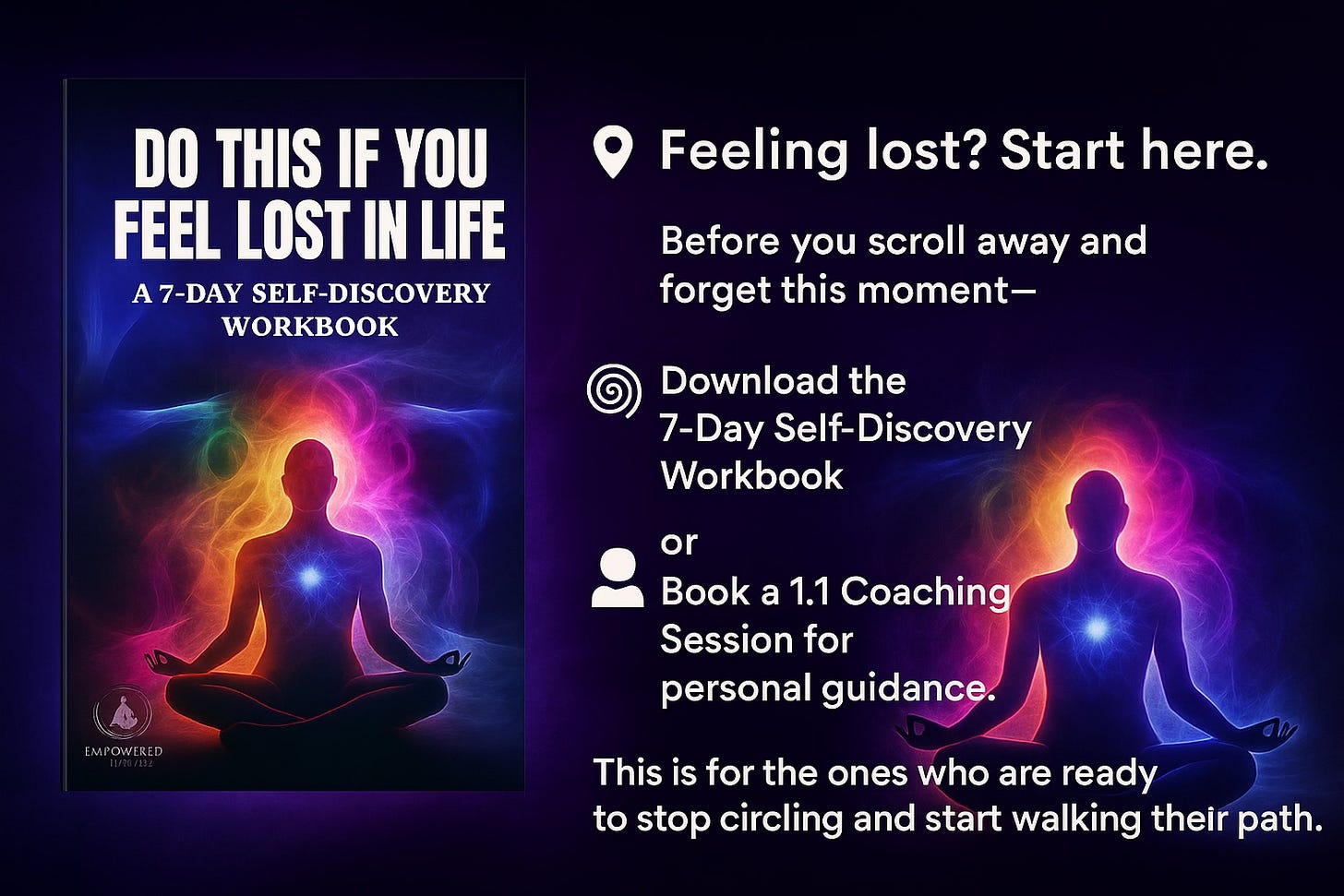
You know exactly what to do.
You’ve known for a long time.
But pretending you don’t is easier.
It buys you time.
It buys you pity.
It keeps you surrounded by people who won’t challenge you—because your confusion keeps them comfortable.
You say you’re stuck.
But that’s not the whole truth, is it?
You’re not stuck.
You’re scared.
Scared of what your life would look like without the excuses.
Scared of what would be required of you if you finally stopped hiding behind “I’m figuring it out.”
Because once you know what to do—and admit it—you're responsible.
And responsibility means movement.
It means letting go of the comfort of circles and stepping into the risk of forward.
You’ve built a whole life around being almost ready.
Almost clear.
Almost healed.
Almost confident.
Almost who you say you want to be.
But “almost” is killing you.
It’s keeping you half-alive, showing up for a life you’re not really living.
And here’s the truth:
You know you need to write.
You know you need to hit the gym.
You know you need to study.
You know you need to eat better.
You know you need to wake up earlier.
You know you need to delete their number.
You know you need to stop scrolling and start building.
You know you need to leave that job.
You know you need to launch the thing.
You know you need to make the call.
You know you need to stop pretending that “waiting on clarity” is anything other than fear.
But saying you “don’t know” gives you a false sense of safety.
And if we’re being real, that’s the identity you’ve built: the one who’s always unsure, always on the edge, always needing one more sign, one more confirmation, one more pep talk before you do what you’ve already been told—by your gut, your spirit, and your own damn reflection.
Let’s call this out for what it is: emotional self-abandonment.
You are abandoning what you know to stay in what’s familiar.
You are choosing confusion because it means you don’t have to be courageous yet.
And people might fall for it.
But your soul isn’t fooled.
And neither is God.
You’re praying for instructions you already received.
You’re asking for freedom while clinging to the chains.
You’re calling the cage safety because it has soft lighting and familiar voices.
But deep down, the truth is rattling in your chest.
You’ve delayed your life long enough.
So here’s your permission:
To stop pretending.
To stop rehearsing the pain.
To stop circling the same mountain when the path forward is clear—even if it’s steep.
Here's what to do next:
1. Call it out.
Get brutally honest with yourself. What’s the one thing you’ve been avoiding, denying, or calling confusion when it’s really clarity you’re too scared to act on? Write it down.
2. Choose movement over motivation.
You won’t always feel ready. Do it anyway. Read the email. Send the message. Turn in the application. Walk away. Start the thing. One small act of movement will do more for your clarity than a thousand overthinking sessions.
3. Sit with the fear, not the lie.
You’re not confused. You’re afraid. So stop lying to yourself and sit with what you’re really feeling. Let that fear teach you, not trap you.
4. Commit to the next right thing.
You don’t need a 5-year plan. You need a 5-minute plan. One right action. That’s it. Then another. That’s how lives are rebuilt.
5. Stop asking people who benefit from your confusion to help you get clear.
If they profit—emotionally, relationally, financially—from you being unsure, they are not your counsel. Stop asking them what you already know in your gut.
There’s a version of you waiting on the other side of your hesitation.
Not the perfect you.
Not the fearless you.
But the honest you.
The one who’s willing to move anyway.
You’re not lost.
You’re not broken.
You’re not waiting.
You’re delaying.
And you don’t have to anymore.
You know exactly what to do.
So stop acting like you don’t.
👉 Get the workbook or book your session here
🔒 Ownership & Use Disclaimer © Empowered Visions Media LLC. All rights reserved.This post and all original content herein are the intellectual property of Empowered Visions Media LLC and Warren Adams. No part of this publication may be copied, reproduced, republished, or distributed without express written permission. Sharing is welcome—duplication is not.



